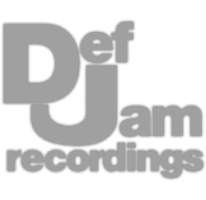Professional Analog Mastering.
Professional Analog Mastering.










Let’s get the obvious out of the way first—FabFilter makes great plugins that are flexible and well-optimized.
The most useful ones, in my opinion, are the Pro-Q3, Saturn2, Pro-C2, Timeless3, Pro-R, and Pro-DS.
The Pro Q3 feels like a reliable and easy-to-use stock EQ, with M/S R/L functionality and a wide variety of filter and phase options. Saturn provides top-quality frequency-specific saturation and optional modulation.
The Pro-C2 is probably the most flushed-out and logical compressor I’ve used - Lookahead with a quick attack, and the vocal algorithm can instantly bring a vocal right to the front of a mix.
Timeless offers everything you’d need from a delay plugin, from classic delays to incredibly complex modulation.
Pro-R feels like the stock algorithmic reverb plugin everyone should have—it’s not flashy or complicated, just great-sounding and flexible enough to work for any application.
Lastly, Pro-DS does what it should without significant artifacts - more than what could be said for a lot of de-essers.
Let’s listen to a vocal chain created with these plugins. I’ll enable each one at a time so you can hear how they control and augment the vocal.
Watch the video to learn more >
Originally, I was going to say Altiverb, but I’ve noticed I use Logic’s stock IR loader a lot more often.
Aside from the great sound impulse responses provide, they’re also free more often than not - many engineers want to share the impulse responses they’ve made of their favorite gear, so all it takes to create the sound of a unit you’ve wanted to try is to search online, find the files, then drag and drop them into the convolution plugin.
For example, my Alesis Microverb stopped working recently, and I haven’t had time to fix it, so I found free impulse responses someone made of their unit, and they sound 99% like the original. Also, I can tweak the files, reverse them, and generally have more flexibility using the plugin instead of the hardware.
Let’s check out impulse responses from an M7 Unit and an Alesis Microverb unit loaded into a convolution plugin.
Watch the video to learn more >
This complex plugin is presented in an easily understandable and approachable way. It’s a chorus plugin with up to 8 voices, frequency-specific amplitudes, variable speed and detuning functions, and two stereo-image modes, making this a great option for BGVs to get them out of the center image.
As we’ll cover later, some chorus plugins are significantly more complex. Still, I’ve found this one to be a time-effective way to add complexity to a vocal, especially group vocals.
Let’s take a listen.
Watch the video to learn more >
This is, simply put, a great-sounding compressor plugin. It’s typically used as a bus compressor, but it works incredibly well on any vocal you want to compress gently while imparting moderate low-order harmonics and, strangely, sub-harmonics.
As you’d imagine, it’s great as a vocal bus compressor if you need to tie together various performances. It works slightly differently than most compressors - the ratio is a gentle 1.5:1. If you use it on vocals, start with 0dB input and output gain, then lower the threshold significantly and increase the gain until you achieve smooth-sounding compression.
One weird thing about this plugin is the unusually high noise floor, which has its amplitude tied to the amplitude of the harmonics—they must have had some reason to include that, but I’m still trying to figure out what that reason is.
Let’s listen to how it pleasantly condenses the vocal.
Watch the video to learn more >
This one’s a classic - I love it for quickly adding distortion to a vocal and maybe some subtle to not-so-subtle tuning with the middle panel.
Of course, the formant and pitch shifting are the main highlights here—both sound fantastic and reliably alter any vocal, regardless of their frequency response.
A free alternative is this Pitchmunk plugin by Vox Samples - you might not feel as cool using it, but the sound is incredibly close.
Let’s check out Little Alter Boy.
Watch the video to learn more >
I’ve shared some of my negative opinions about this plugin in a previous video, but they’re more geared toward overusing it than the plugin itself.
If I have a vocal that’s unpleasant regardless of how it’s equalized, compressed, etc. then this plugin definitely keeps me from pulling my hair out.
By removing aggressive resonances, the vocal becomes easier to listen to, but as I’ve said before, I don’t like hearing this plugin put on every new mix—it kind of removes the uniqueness of different productions.
Regardless, it’s a fantastic plugin that’s well-designed, well-optimized, and worth having in case it’s needed.
Let’s listen to it taming some aggressive resonances on a vocal.
Watch the video to learn more >
Other plugin developers have tried to copy Melodyne's design and level of control, but the original setup still seems best for this style of tuning.
It works by playing or importing the vocal, letting the plugin separate the vocal into distinct pitch blocks, and then allowing us to go in and adjust as needed.
Even with the entry-level version that I have here, I still have a lot more control over it than any traditional tuner. I can collectively or individually adjust the pitch and pitch fluctuation within a note, remove passages, affect the timing, and more.
Advanced versions allow for precise vibrato alternations and greater control of formants, harmonics, etc, but if you haven’t already, try this entry-level version and see if you like it.
Watch the video to learn more >
This is a classic plugin - typically used as a bus or mix bus processor; I’ve found it fantastic for individual vocals or vocal buses.
Multiple band saturation levels and release times allow you to shape the vocal's timbre, while the basic EQ helps shape the tone after compression and saturation.
It seems like an odd choice for vocals, but take a listen and notice how much fuller the vocals become.
I’m not a huge fan of channel strip plugins, but this sounds great and offers impressive flexibility.
It’s a zero-latency processor, including over 21 500-series-esque modules, each straightforward in design, purpose, and functionality.
It includes preamps of various eras with gain-riding, filters, EQs with unique filter types and curves, compressors with distinct behaviors, limiters, de-essers and more.
I was skeptical of this plugin at first, but after using it for a bit, I’m genuinely impressed by the sound quality.
Let’s listen to a chain created with the InfiniStrip.
Watch the video to learn more >
This is the complex chorus plugin I referred to earlier - but thankfully, there are a lot of presets to get us started.
Routing, minute parameters, and just about every function imaginable can be altered, but the important thing is it sounds good.
A personal favorite preset of mine is the tripler - it instantly adds a classic character to the vocal while thickening and making it more complex.
But with hundreds of presets and immense flexibility, I imagine you’d have a different go-to preset.
Let’s listen to a couple of them.
Watch the video to learn more >
Metatune kind of gets slept on—to me, and based on reviews, it seems everyone who’s used it says it sounds better than Autotune, has a better interface, and is more flexible.
The optional time windows for note snapping is a great function; the doubler is fantastic for when I’m tuning BGVs, and the 3 ms of lookahead offers a really unique but usable effect that other tuners don’t offer.
I can understand why people go with the Autotune, but give this one a try, you might feel the same way I do.
Let’s take a listen.
Watch the video to learn more >
In the past, I’ve been tempted to buy a Roland Space Echo - but thankfully, this plugin exists and has saved me from making that financial mistake.
I’ve used a real one before, and this plugin doesn’t sound identical, but it gets impressively close - more so than any other plugin emulation of the unit I’ve tried, including Universal Audio’s.
It also includes some additional functions, like two preamps, an input EQ, some noise and modulation controls, and an LFO that can easily be linked to any function and synced to the BPM.
For about 1/50th the price of the unit it’s emulating (at least at the time of writing this since it’s on sale) it’s a great deal for such an incredibly useful plugin.
Watch the video to learn more >
You might have heard the marketing behind the plugin: how it’s a 1:1 code of the original unit’s software - which I think is pretty amazing.
But what makes this plugin valuable, in my opinion, is its kind of clean sound, but not really. It’s transparent but also has a distinct character - it’s hard to describe.
I’ve used the units, and it sounds a lot like them. I’m assuming the A/D/A conversion plays a role in the unit’s character, but it still feels a lot like using the unit.
On vocals, the bandwidth function is perfect for cleaning up the low mids, or de-essing with either a narrow band or HP filter.
The parallel compression function works how it should, unlike most parallel functions in compressors. And mid-side processing with de-linking offers an effective way to target a particular part of the centered or stereo image if you’re processing post reverb or a vocal bus.
It’s flexible, sounds great, and includes presets from Bob Katz, so I’m a big fan.
Let’s listen to it, and let me know if you hear that strange clean but not clean sound I mentioned earlier.
Watch the video to learn more >
Some of you might be rolling your eyes at this one, but I can’t lie—I love this plugin on vocals. It seems like a simple EQ, but it also introduces harmonics and imparts subtle wave-shaping. The two filters interact with one another, similar to how Pultec’s low-frequency boost and cut functions interact.
Most importantly, it offers an incredibly effective way to increase the brightness and clarity of a vocal - especially if it’s used at the end of a chain after temporal effects.
Let’s listen to it with subtle to moderate settings.
Watch the video to learn more >
It doesn’t look like much, but I genuinely believe this plugin or one like it will become an invaluable tool for engineers in the not-so-distant future.
In short, machine learning can be used to create an imprint of hardware—by that, I mean harmonic distortion, noise, frequency response, stereo imaging, ADSR, and more can all be captured pretty faithfully by running signals at varying amplitudes and frequencies through the unit while the software measures any changes.
This gets converted into a file that can be loaded into this free modeler, just like an impulse response. Like impulse responses, people create files based on their favorite gear and release them for free.
So, let’s check out the model for a Studer tape machine set at a higher amplitude. Notice that when I increase the input, the THD, timbre, and frequency response all gradually adjust convincingly.
Then, we’ll try a more subtle model of a Neve 1073 preamp - again, the input and output levels significantly change the model’s behavior.